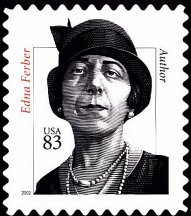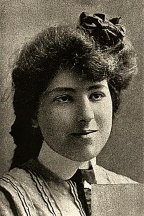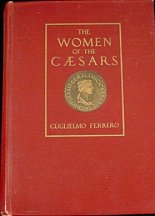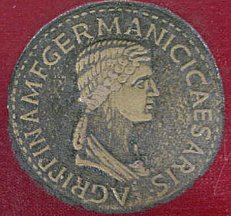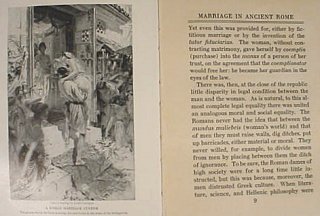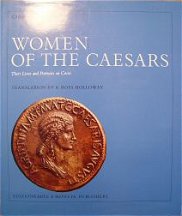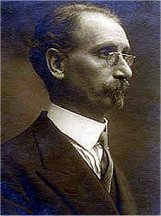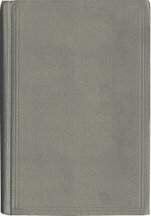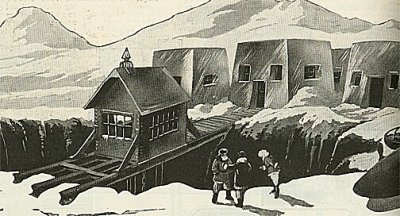TITLES
FABIAN,
Warner Flaming Youth
FAIRBAIRN:
Fairbairn's Crests of Leading Families (1911)
FAIRBANK,
Janet A. The Smiths
FARJEON,
J. Jefferson No. 17
FARRELL: What Price Progress
FARRELL,
Andrew: John Cameron's Odyssey (1928)
FARRELL,
Hugh: What Price Progress; the Stake of the Investor in the Development
of Chemistry. (NY, Putnam, 1926)
FARRINGTON: King Arthur
FARRINGTON,
Margaret Vere~Tales of King Arthur &d his Knights of the Round Table
FARRINGTON: Neanderthal
Man
Fauntleroy
1888 Scibners
Fauntleroy
- June 1893, Emma's book from Auntie Hempstead 1897, World's Fair stamped
inside, Chicago, Emma graduated 1893 Brown school, and Plant Leaves inside,
rotted, many notes written inside, Emma and Ed's writing
FAVERSHAM,
Lucie Opp The Squaw Man
FERBER,
Edna Fanny Herself
FERBER,
Edna So Big
FERRERO,
Guglielmo ~ Women of the Caesars - Chattanooga Inst. 1911 Putman
and Sons - History.
FEZANDIE,
Clement Through the Earth
FEZANDIE: Through the
Earth
FIELD,
Eugene A Child's Garland of Verses
FIELD,
Eugene The Tribune Primmer
Finger,
Charles J. : Bushrangers
Fingerprint
Instructor - hand in gold gilt - 12/16/1930 1927 New York belonged to
FM Danger
FINN,
Frank The Wild Beasts of the World
FINNEY: Death Watch
FITCH: Junipers Serra?
FITZGERALD,
Edward Rubaiyat of Omar Khayyam
FITZGERALD,
F. Scott The Beautiful and Damned
FITZHUGH,
Percy K. Tom Slade with the Boys Over There
FLAHERTY: My Eskimo Friends
FLAMMARION,
Camille: Astronomy for Amateurs...translated by Frances A. Welby (NY, Appleton,
1904)
FLAMMARION: Astronomy
for Amateurs
FLEMING,
Brandon The Crooked House
FLETCHER,
J. S. The Secret Way
FOLEY,
James W. Sing a Song of Sleepy Head
FOLEY,
James W. Sing a Song of Sleepy Head
FOLEY,
James W. The Mellow Year
FOLEY,
James W. The Mellow Year
FOLEY: The Mellow Year
FOOTE,
John Taintor Pocono Shot
FORD,
Paul Leicester Janice Moredith
FORSTER,
E.
M. A Passage to India
FORSTER: A Passage to
India
FORSYTHE,
General George A.: Thrilling Days in Army Life ~ 1900 ~ Describes
one of the classic encounters between Indians and the frontier army known
to history as the Battle of Beecher Island. ~ Cited by ERB as reference
material for his Apache novels
FOSTER,
Edna A. Something to Do Girls
FOSTER, Harry L.: A Beachcomber
in the Orient
FOSTER,
Stephen Collins My Old Kentucky Home
FOSTER: Travels and Settlements
of Early Man
FOWLER: Modern English
Usage
FOWLER: Physiology
FRANCE,
Anatole: The Crime of Sylvestre Bonnard (1897)
FRANCIS
JR, John The Triumph of Virginia Dale
FRANCK, Harry: Roving
Through Southern China
FRANCK: Wandering in
Northern China
FRANCK: Lena M.: Working
My Way Around the World
FRANCK,
Lena M. Working My Way Around the World
FRASER,
Chelsea Curtis Work-A-Day Heroes
FREEMAN,
Austin ~ The D'Arbley Mystery
FREEMAN: Monsier Beaucaire
FRIEZE,
Henry S. Bucolics, Georgics and the First Six Books of The Aeneid of Vergil.
With Notes and a Vergillian Dictionary. 2nd Edition. New York: American
Book Company, 1883. Flyleaf inscription: “Andover, E.R. Burroughs, Chicago,
Illinois, Michigan Military Academy, Orchard Lake, Michigan. April 3rd,
1894.” Another notation: “Is Dixon going to get the whisky?”
FRIEL, Arthur O.: The
River of Seven Stars
FUEGER: Bush-Rangers
FUNK
AND WAGNALLS ~ Funk and Wagnalls ~ Better Say - Correct Use of English
FURBAY: Nature Chats
FURLONG,
Charles Wellington Let Er Buck (1923 dedication and author
sketch of horse and rider) |

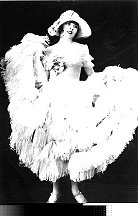 First
National bought the film rights to Warner Fabian's novel Flaming Youth,
all about a flapper named Patricia Fentriss, and Colleen Moore wanted the
starring role. She knew the part of Pat could make her famous. The studio
was unwilling to give it to her. She asked her film producer husband John
McCormick to get it for her as a wedding present (whether he could have
managed this is debatable, although he repeatedly stuck up pictures of
Colleen where studio bosses could see it). She also enlisted the help of
her mother, who chopped off her hair, and a star was born.
First
National bought the film rights to Warner Fabian's novel Flaming Youth,
all about a flapper named Patricia Fentriss, and Colleen Moore wanted the
starring role. She knew the part of Pat could make her famous. The studio
was unwilling to give it to her. She asked her film producer husband John
McCormick to get it for her as a wedding present (whether he could have
managed this is debatable, although he repeatedly stuck up pictures of
Colleen where studio bosses could see it). She also enlisted the help of
her mother, who chopped off her hair, and a star was born.
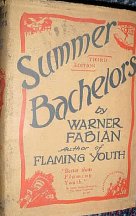 Summer Bachelors
~ 1926 ~ NY: Boni & Liveright
Summer Bachelors
~ 1926 ~ NY: Boni & Liveright
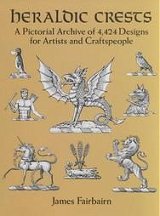
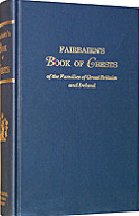 Since
its first publication in 1859, Fairbairn's Book of Crests of the
Families of Great Britain and Ireland has been a recognized reference in
heraldry, an indispensable adjunct to every library, the standard authority
for business and trade purposes. Widely used by British jewelers and seal
engravers, it has been extensively revised and updated over the years to
maintain its reputation as one of the most authoritative and complete collections
of crests and mottoes available in Britain. This comprehensive collection
reproduces all 314 plates from "Fairbairn" - over 4,000 designs in all
- offering artists and craftspeople an immediately usable resource of authentic,
time-honored heraldic motifs. Among the designs are many and tried representations
of human figures, mythical beings, soldiers, stags, falcons, dogs, unicorns,
griffins and other mythological creatures, lions rampant, warriors, farmers,
hands, flowers, rosettes, crowns, wreaths,and many other striking and eye-catching
images.
Since
its first publication in 1859, Fairbairn's Book of Crests of the
Families of Great Britain and Ireland has been a recognized reference in
heraldry, an indispensable adjunct to every library, the standard authority
for business and trade purposes. Widely used by British jewelers and seal
engravers, it has been extensively revised and updated over the years to
maintain its reputation as one of the most authoritative and complete collections
of crests and mottoes available in Britain. This comprehensive collection
reproduces all 314 plates from "Fairbairn" - over 4,000 designs in all
- offering artists and craftspeople an immediately usable resource of authentic,
time-honored heraldic motifs. Among the designs are many and tried representations
of human figures, mythical beings, soldiers, stags, falcons, dogs, unicorns,
griffins and other mythological creatures, lions rampant, warriors, farmers,
hands, flowers, rosettes, crowns, wreaths,and many other striking and eye-catching
images.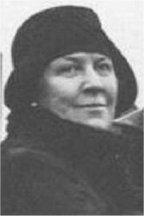 In 1900,
at the age of 21, Janet Ayer became Mrs. Kellogg Fairbank. While raising
three children Mrs. Fairbank took time to do some writing. Writing was
one of the few acceptable careers for a woman of her station. She
started with a few political articles and some drama criticism for local
magazines. In 1910 she published her first novel.
In 1900,
at the age of 21, Janet Ayer became Mrs. Kellogg Fairbank. While raising
three children Mrs. Fairbank took time to do some writing. Writing was
one of the few acceptable careers for a woman of her station. She
started with a few political articles and some drama criticism for local
magazines. In 1910 she published her first novel.
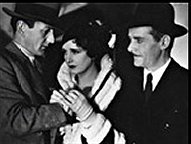
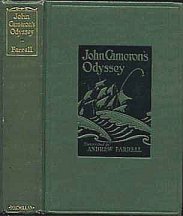
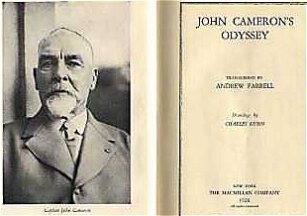
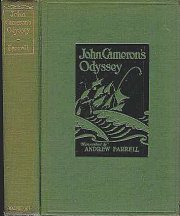
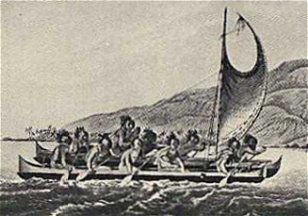
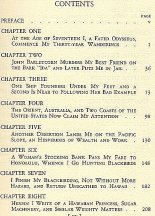
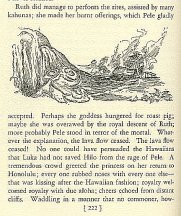
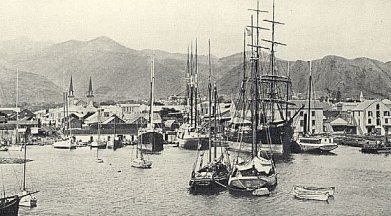
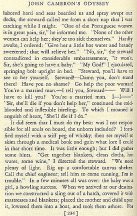
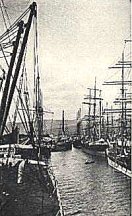
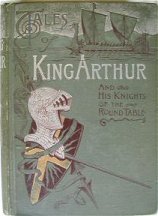
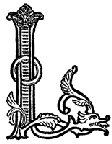
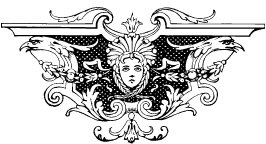
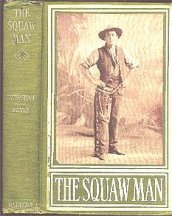
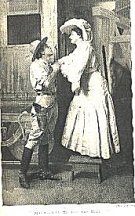
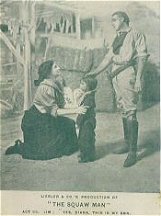
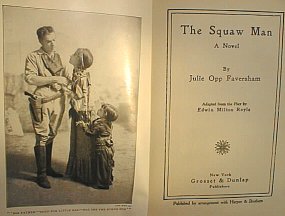
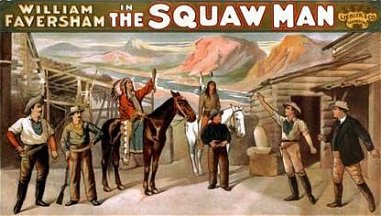
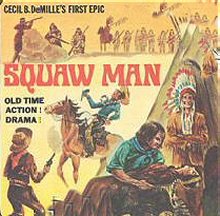
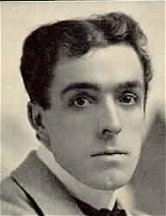
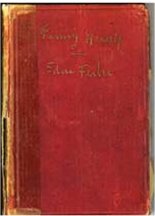
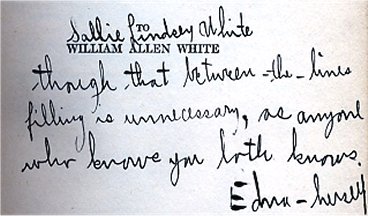
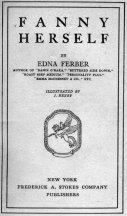
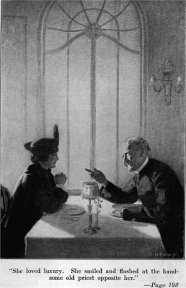
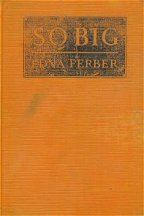
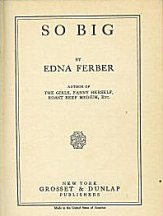
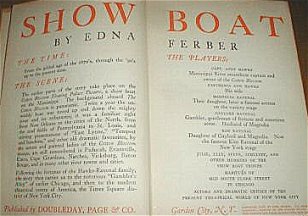
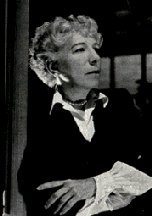 Edna
Ferber was born in Kalamazoo, Mich., Aug. 15, 1885, the
daughter of a Hungarian-born Jewish storekeeper, Jacob Ferber, and his
Milwaukee-born wife, Julia Neumann Ferber. In some sources, perhaps because
of vanity, she claimed to have been born in 1887, but census documents
show otherwise. She spent her early years in Chicago and Ottumwa, Iowa.
At age 12, she moved to Appleton, Wis., where her father ran a general
store called My Store. She expressed her writing talents early as "personal
and local" editor of her high school newspaper, the Ryan Clarion. When
she graduated from Ryan High, her senior essay so impressed the editor
of the Appleton Daily Crescent that he offered her a job as a reporter
at age 17, for the salary of $3.00 per week. Limited by family finances
from pursuing her real dream -- studying at Northwestern University's School
of Elocution for a career on stage -- she took the job. After being fired
by the Crescent, she went on to write for the Milwaukee Journal, where
she worked so hard that one day she collapsed in exhaustion. While home
in Appleton recuperating from anemia, she wrote her first short story and
her first novel. In 1910, Everybody's Magazine published the short story,
The Homely Heroine, set in Appleton. Her novel, Dawn O'Hara, the story
of a newspaperwoman in Milwaukee, followed in 1911. She gained national
attention for her series of Emma McChesney stories, tales of a traveling
underskirt saleswoman that were published in national magazines. She wrote
30 Emma stories before finally refusing to do any more. Her first play,
Our Mrs. McChesney, was produced in 1915, starring Ethel Barrymore. Ferber
was a prolific and popular novelist. She won the Pulitzer Prize in 1924
for So Big, the story of a woman raising a child on a truck farm outside
of Chicago. Others of her best known books include Showboat (1926), Cimarron
(1929), Giant (1952) and Ice Palace (1958). Showboat, about a girl's life
on the floating theater of the Mississippi River, was made into a musical
comedy on Broadway and three motion pictures. So Big was adapted into two
films. Giant, a story of life in Texas, starred Elizabeth Taylor and Rock
Hudson on the big screen and was James Dean's last movie.She died of cancer
at age 82 on April 16, 1968, at her Park Avenue, New York, home. In a lengthy
obituary, the New York Times said, "Her books were not profound, but they
were vivid and had a sound sociological basis. She was among the best-read
novelists in the nation, and critics of the 1920s and '30s did not hesitate
to call her the greatest American woman novelist of her day."
Edna
Ferber was born in Kalamazoo, Mich., Aug. 15, 1885, the
daughter of a Hungarian-born Jewish storekeeper, Jacob Ferber, and his
Milwaukee-born wife, Julia Neumann Ferber. In some sources, perhaps because
of vanity, she claimed to have been born in 1887, but census documents
show otherwise. She spent her early years in Chicago and Ottumwa, Iowa.
At age 12, she moved to Appleton, Wis., where her father ran a general
store called My Store. She expressed her writing talents early as "personal
and local" editor of her high school newspaper, the Ryan Clarion. When
she graduated from Ryan High, her senior essay so impressed the editor
of the Appleton Daily Crescent that he offered her a job as a reporter
at age 17, for the salary of $3.00 per week. Limited by family finances
from pursuing her real dream -- studying at Northwestern University's School
of Elocution for a career on stage -- she took the job. After being fired
by the Crescent, she went on to write for the Milwaukee Journal, where
she worked so hard that one day she collapsed in exhaustion. While home
in Appleton recuperating from anemia, she wrote her first short story and
her first novel. In 1910, Everybody's Magazine published the short story,
The Homely Heroine, set in Appleton. Her novel, Dawn O'Hara, the story
of a newspaperwoman in Milwaukee, followed in 1911. She gained national
attention for her series of Emma McChesney stories, tales of a traveling
underskirt saleswoman that were published in national magazines. She wrote
30 Emma stories before finally refusing to do any more. Her first play,
Our Mrs. McChesney, was produced in 1915, starring Ethel Barrymore. Ferber
was a prolific and popular novelist. She won the Pulitzer Prize in 1924
for So Big, the story of a woman raising a child on a truck farm outside
of Chicago. Others of her best known books include Showboat (1926), Cimarron
(1929), Giant (1952) and Ice Palace (1958). Showboat, about a girl's life
on the floating theater of the Mississippi River, was made into a musical
comedy on Broadway and three motion pictures. So Big was adapted into two
films. Giant, a story of life in Texas, starred Elizabeth Taylor and Rock
Hudson on the big screen and was James Dean's last movie.She died of cancer
at age 82 on April 16, 1968, at her Park Avenue, New York, home. In a lengthy
obituary, the New York Times said, "Her books were not profound, but they
were vivid and had a sound sociological basis. She was among the best-read
novelists in the nation, and critics of the 1920s and '30s did not hesitate
to call her the greatest American woman novelist of her day."
